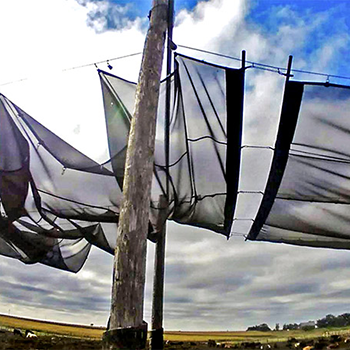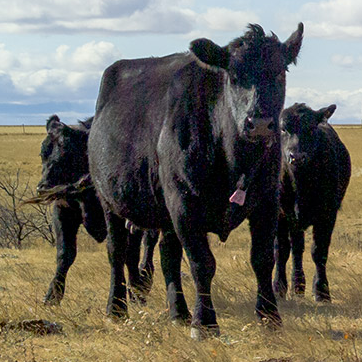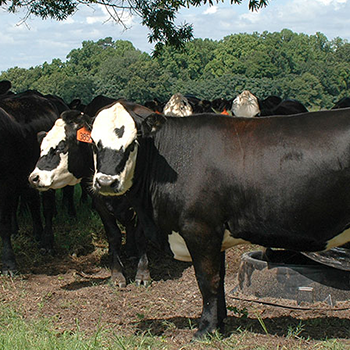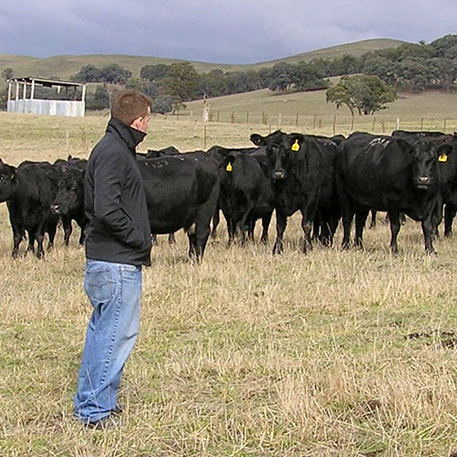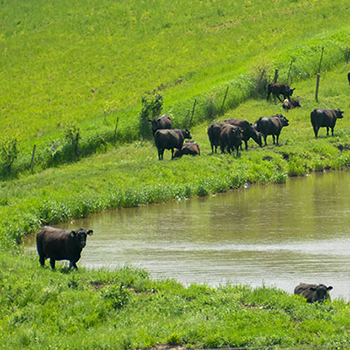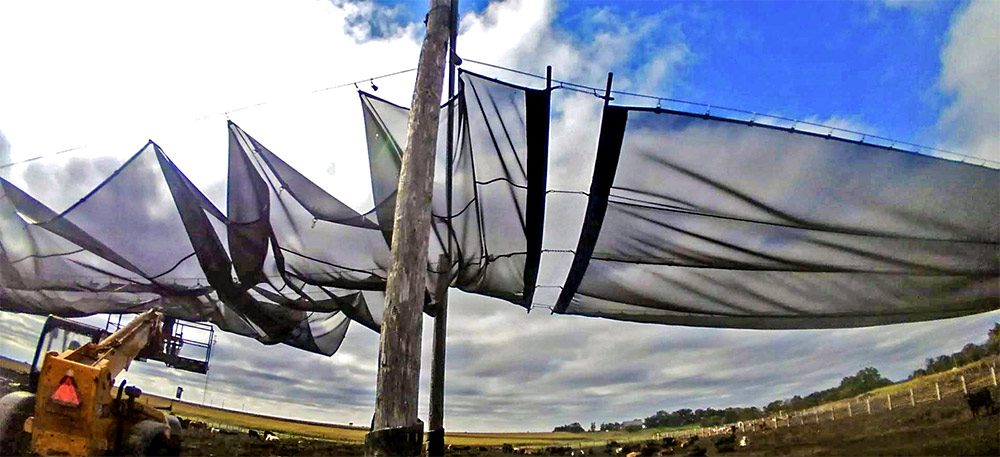
Shade Makes a Difference
Address heat stress challenges before they begin.
Dusty Schley runs a feedyard near Aberdeen, S.D. Like any feedyard operator today, he is concerned about the cattle market crisis, but says the things he is really passionate about are the day-to-day operations. He is always trying to make his feedyard better and avoid problems. One of the issues he tries to minimize is heat stress.
“Every region has a different climate and different challenges, but in our region it finally starts to warm up in early May, and it’s time to think about how to keep our cattle cool in the summer,” he says.
Two years ago, he came across an idea for shade and created his own version, making a shade structure for the entire length of his feedyard.
“Nobody worries about heat-stressed cattle in April here, but we sure worry about it in July and August. When I was young, it always bothered me when we were frantically running around in summer trying to water cattle to cool them — because if we’d prepared for that ahead of time, we’d have had everything set up. So we built these shades, and now every spring we try to get those back up and working properly,” he explains.
Sometimes they see cattle stressed and panting in May — the first day it hits 80° F, he says. They are stressed more at that temperature than when it’s 90°-100° in August because they haven’t had a chance to adapt yet. They haven’t completely shed their winter coats, and their bodies haven’t adjusted to the heat.
“So, I try to prepare for summer and get ready for the heat, and make sure all our water tanks and wells are properly working. It pays to be proactive; it drives me nuts when we have an emergency and realize that if we’d done something a month ago to prevent it, this wouldn’t be an emergency. We’d be ready for it,” Schley says.
“Shade is extremely important if you have an environment without much cloud cover,” says Don Spiers, professor emeritus in the Division of Animal Science at the University of Missouri. He has worked with dairy and beef cattle for many years looking at heat stress. He says cattle constantly exposed to sun get much hotter than those with shade.
“If using a roof for shade, it should be insulated, especially if it’s metal; or you’ll get radiant heating and it will be like an oven underneath. In a feedlot, we recommend a roof at least 10 feet off the ground. The higher the better, because it allows more air movement underneath it,” says Spiers.
If cattle are out grazing, they also need adequate shade for the hottest times of day. Years ago, extension agents were telling people to get rid of trees — to maximize productive acres — which was a big mistake, says Spiers. Trees provide windbreaks and shelter in winter and shade in summer.
“Some producers use portable shade structures that they can move from pasture to pasture. Cattle need some way to get out of direct sunlight. The metabolic rate of a cow, and especially a fast-growing animal like a feedlot steer, is much higher than ours. We may feel comfortable at a certain temperature, but these animals are going to be hot,” he says.
For more information on building a portable shade, read "By Design" in this issue at https://bit.ly/DesignShade.
Editor’s note: Heather Smith Thomas is a cattlewoman and freelance writer from Salmon, Idaho. Photo courtesy Dusty Schley.
